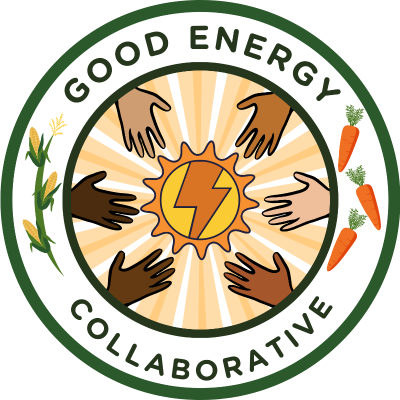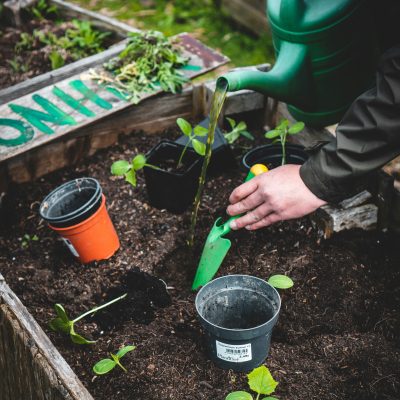Article
Ariza Nanji’s Action Project through the Good Energy Collaborative (GEC) was born out of deep, ongoing relationships with communities in Chester and Philadelphia, communities that continue to face the compounded impacts of systemic racism, environmental degradation, and economic inequity. In neighborhoods disproportionately burdened by industrial pollution, flooding, and extreme heat, residents, especially Black, Indigenous, and people of color (BIPOC), have long been denied the tools and platforms to shape environmental solutions that work for them.
Ariza’s work addressed the intersections of environmental justice, racism, climate resilience, and youth empowerment, drawing on her years of organizing alongside residents and her commitment to building a more equitable and regenerative future. Her vision was clear: climate justice must be led by those most impacted, and young people must be equipped with the knowledge, skills, and spaces to lead that transformation.
Project Development and Implementation
Rather than starting from scratch, Ariza and the GEC team strengthened and expanded the Collaborative’s existing infrastructure. Her Action Project launched in 2024 with a 10-week Summer Solar and Environmental Justice Enrichment Program, co-designed with community members, educators, and youth leaders. The program was revived and expanded in 2025, growing into a cornerstone of GEC’s community-led model.
Climate justice must be led by those most impacted, and young people must be equipped with the knowledge, skills, and spaces to lead that transformation.
Key components of the project included:
- SolarAgriculture (SolarAg) Labs: Yearlong learning spaces developed in partnership with the Chester Education Foundation and YeahPhilly, where youth explored the relationship between food systems, renewable energy, and environmental justice.
- Environmental Justice (EJ) Walks: Public walks held across Chester and Philadelphia that turned everyday spaces into community classrooms, blending storytelling with civic learning.
- Hands-On Solar Projects: Youth participants helped design and install solar-powered community charging stations, providing functional, local infrastructure while fostering critical discussions around energy sovereignty and sustainability.
- Collaborative Learning: Workshops and labs were co-led by BIPOC mentors (referred to as “city stars”) who shared lived experience alongside technical knowledge, creating intergenerational learning rooted in trust, care, and self-determination.
- Sustainability Efforts: The project was supported through grant funding and institutional backing from Swarthmore College, enabling Ariza to serve as full-time program coordinator and secure long-term investments in community programming.
Reflecting back & Lessons Learned
Ariza’s vision for the project was deeply shaped by her personal journey—particularly her time in Copenhagen as part of Humanity in Action, where she encountered a model of activism rooted in dialogue, care, and shared leadership. That experience challenged her to move away from extractive, top-down approaches and toward a relational model of organizing. Her time in Chester and Philadelphia reinforced this ethic: true transformation required listening first, earning trust, and building with – not for – communities.
One moment that captured this ethos occurred during a community session in Chester, when a participant reflected, “When I saw dumping in Chester, I realized it was the same dumping in Philly, in neighborhoods that look like mine.” This sparked a powerful recognition of shared struggle – and later, shared leadership – as that same participant grew into a key youth mentor and co-facilitator of the Environmental Justice walks.
The project’s biggest surprise was how quickly momentum built once young people saw themselves reflected in the work.
Challenges were plenty, especially navigating logistical hurdles between two distinct city ecosystems and balancing institutional timelines with grassroots needs. But the project’s biggest surprise was how quickly momentum built once young people saw themselves reflected in the work.
“Celebrate small wins. Whether it was a solar panel installed, a successful workshop, or someone landing a green job, taking time to honor progress helped maintain momentum and morale,” Ariza shared. The blend of hands-on action, co-creation, and visible change fueled deeper engagement and local leadership.
Next Steps
Ariza’s Action Project was only the beginning.
Ariza’s Action Project was only the beginning. Building on its early successes, the Good Energy Collaborative plans to:
- Expand the SolarAg Labs into a year-round youth leadership and workforce development program in renewable energy and urban agriculture.
- Strengthen the EJ Certification Track, preparing young adults for green careers with a justice-oriented lens.
- Institutionalize Community Evaluation methods that ensure accountability and reflection are community-driven.
- Scale Regional Partnerships with schools, government agencies, and local businesses to support broader implementation and sustainability.
- Explore New Learning Hubs that are community-owned and solar-powered—reimagining public infrastructure through justice and accessibility.
Get Involved
Ariza invites organizers and community leaders to co-host Environmental Justice Walks and workshops. Educators and students can engage through collaborative learning exchanges. Additionally, supporters and institutions can fund programs, sponsor solar installations, or help disseminate GEC’s community-rooted model.
Learn more and follow the work at:
- GEC Website
- Digital Storymap
- Instagram: @goodenergycollaborative
Partner organizations on this project were:
- YeahPhilly
- Chester Education Foundation
- Chester Residents Concerned for Quality Living
- Philly Thrive
- Philly Service Announcement
- Reentry Community Farm
Updated July 2025




